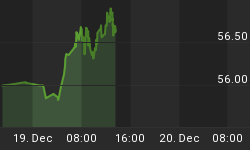Consider the following hypothetical scenario and typical investor conundrum:
The price of precious metals is grinding higher, catching the attention of new investors to the sector. The price of silver and gold are well above their 50 and 200 day moving averages and many of these new investors seek opinions on how to proceed. Notice that most commentators are bullish, and price movements do not appear to have reached extreme levels in comparison to past price movements. But now what do you do? If an investor buys in now they risk a drop in the currently advancing price but if they wait they risk missing out on the next let up.
This is a scenario that we believe is similar to today's situation.

It is our belief that if investing is too complicated the probability of success diminishes greatly. Too many investors seem to search for the easy, 'can't lose' secret that will guarantee instant success, but those who understand markets understand that such a perfect solution does not exist.
There is no easy answer to the above scenario but our approach would be to analyze the situation in an effort to find the simplest solution. The following is not investment advice as we are not certified investment advisors and we do not know your specific situation, but rather it is an explanation of our opinion regarding the preceding scenario.
We believe investors are by far their own biggest enemy. Fear and greed seem to take over most of their decision making, and when faced with a scenario such as the one above, the fear of "missing out" is often overwhelming. It is true that an investor could miss out on a big opportunity if they do not move quickly but at the same time they could also risk a lot of capital.
Currently we are extremely bullish on silver and gold as we have been for many years, but we are not planning on adding to new bullion positions at this time. Why? We think many investors misinterpret a general statement of "being bullish" for meaning that prices will continue higher from the exact moment of receiving the comment until the ultimate expected high. If prices do not instantly head higher from the time of purchase many investors becomes scared, frustrated or impatient and sometimes sell before that next move higher does in fact begin.
We believe this is the one of the biggest flaws of the average investors' strategy. It is true that from time to time "mega parabolic price spikes" can shoot a particular investment into the stratosphere and anyone not with a previously invested position will miss out. But as a general rule markets move up and down as investors become over enthusiastic and over pessimistic. We try not to get caught up in the excitement of trading and chasing the market higher. Basically we like to average into positions when markets are not exciting and average out of markets when they are exciting.
Are we bullish on the price of silver and gold? Absolutely. Our portfolio is positioned to benefit from a positive rise in the price of precious metals. It is possible that short term prices may head higher but we are not adding to positions at these levels as we believe that in the short term this may be a risky move.

Prices have moved very quickly since August of 2007. They appear to have made a very strong move but the reality is that it has taken six months to happen. Interestingly, it seems as though most investors will note such a positive price movement and expect similar performance over the next week or two. Should they not get their expected price move, they once again become frustrated and impatient. This is an emotional hurdle that investors must learn to overcome.
In the long term we believe prices are heading much higher and we are therefore looking for pessimism in the precious metals market before adding to our positions. We sell into extreme optimism. We understand that we could miss out on an opportunity to have more invested for a short term move higher, and we are willing to risk losing that opportunity. Rather than trying to catch up to the current markets move we try to anticipate the next markets move.
We try to take positions when most others are not and sell when most others are not. If you are interested in learning about how we do so, we recommend you visit our website at www.investmentscore.com. Here you may also subscribe to our free newsletter.















